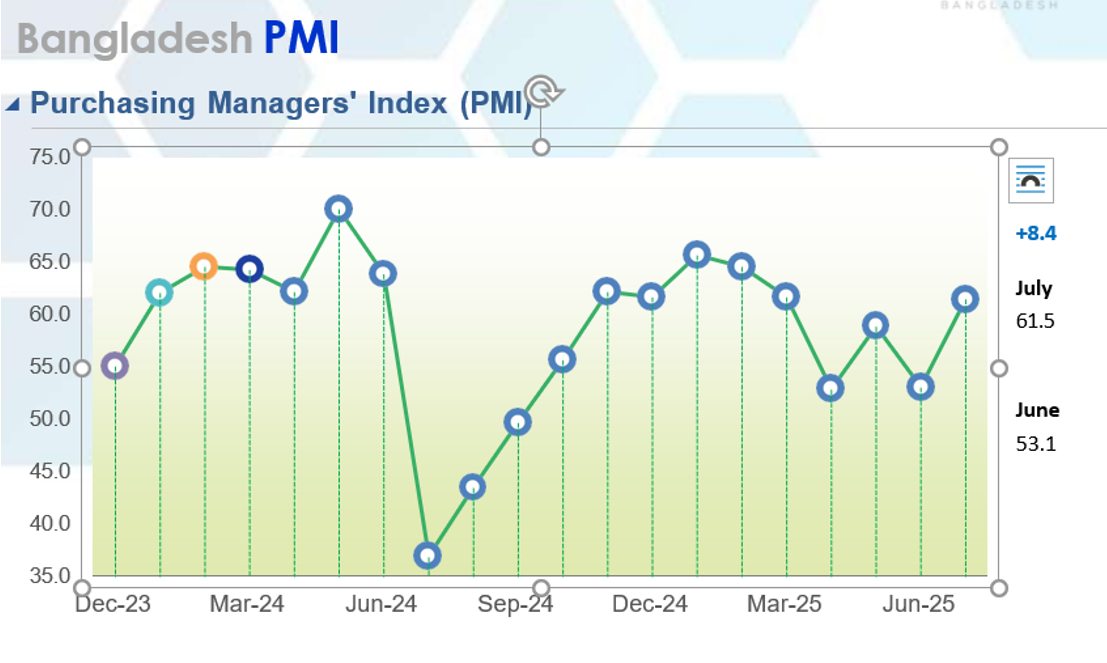The Purchasing Managers’ Index (PMI) of Bangladesh climbed to 61.5 in July, marking an 8.4-point increase from the previous month and indicating a faster pace of overall economic expansion.
The improved PMI score was largely driven by accelerated growth in the manufacturing and services sectors, a return to expansion in construction, and slower—but still positive—growth in agriculture, according to a press release.
The agriculture sector continued its 10-month streak of expansion, although at a reduced pace. While indexes for new business, activity, and input costs all slowed, the index for order backlogs saw faster growth. However, employment in the sector contracted further, marking the second consecutive month of decline.
The manufacturing sector recorded its 11th straight month of growth, with a quicker expansion rate. Gains were seen in new orders, factory output, input purchases, finished goods, imports, input prices, supplier deliveries, and backlogs. However, both export orders and employment in manufacturing contracted.
After contracting for the first time in the previous month, the construction sector returned to positive territory. It posted growth in new business, activity, input costs, and backlogs. Yet, the employment index contracted for a third consecutive month.
The services sector marked its 10th consecutive month of expansion, also at a faster pace. Growth was recorded across new business, activity, employment, input costs, and backlogs.
As for future business expectations, the agriculture, manufacturing, and services sectors saw slower growth outlooks, while the construction sector posted a more optimistic expansion rate.
“The July PMI points to robust growth in Bangladesh’s economy, primarily led by strong performance in manufacturing and services. Notably, exports hit a record high of $4.77 billion in a single month,” said M Masrur Reaz, chairman and CEO of Policy Exchange Bangladesh.
He also noted that agriculture’s slower momentum reflects seasonal factors and disruptions from the monsoon.


